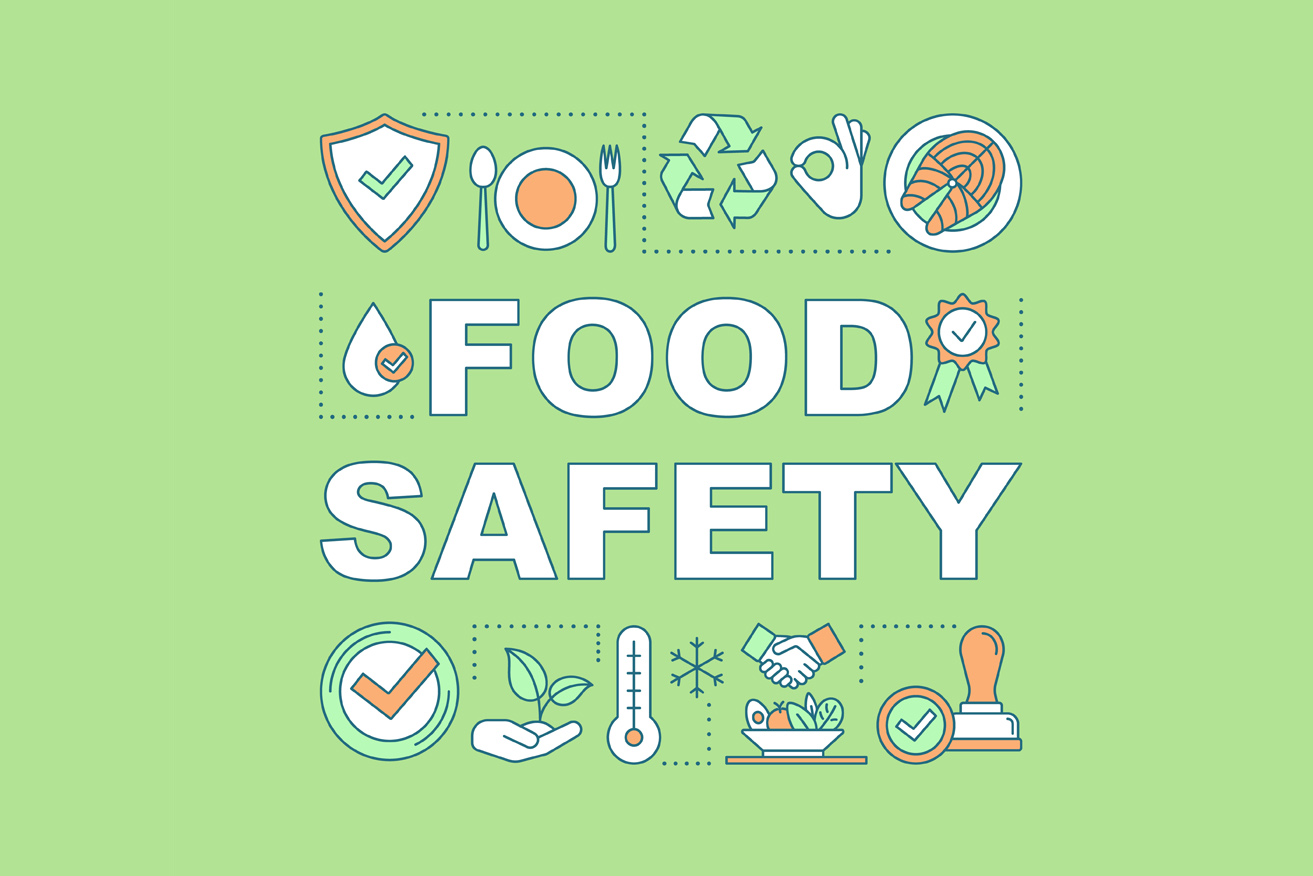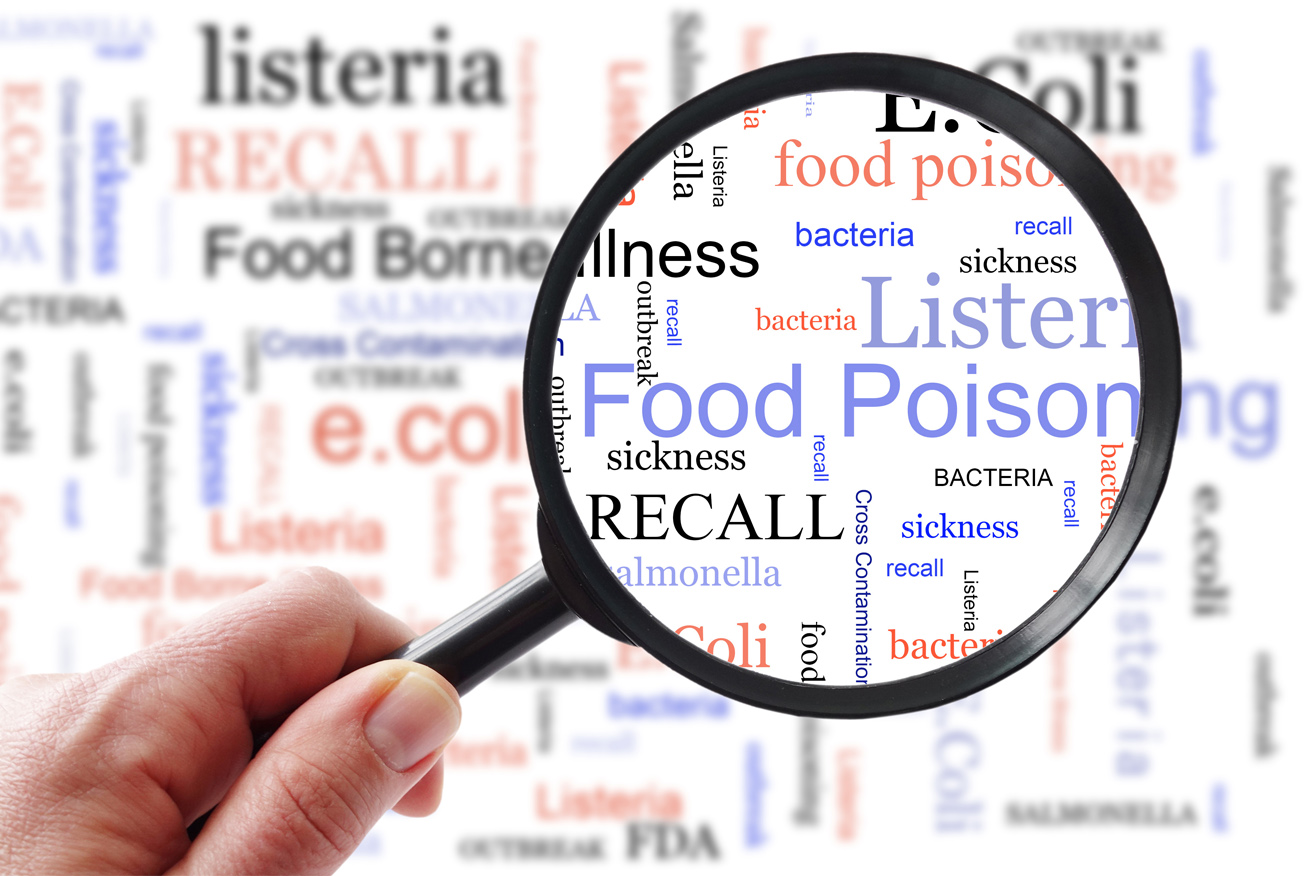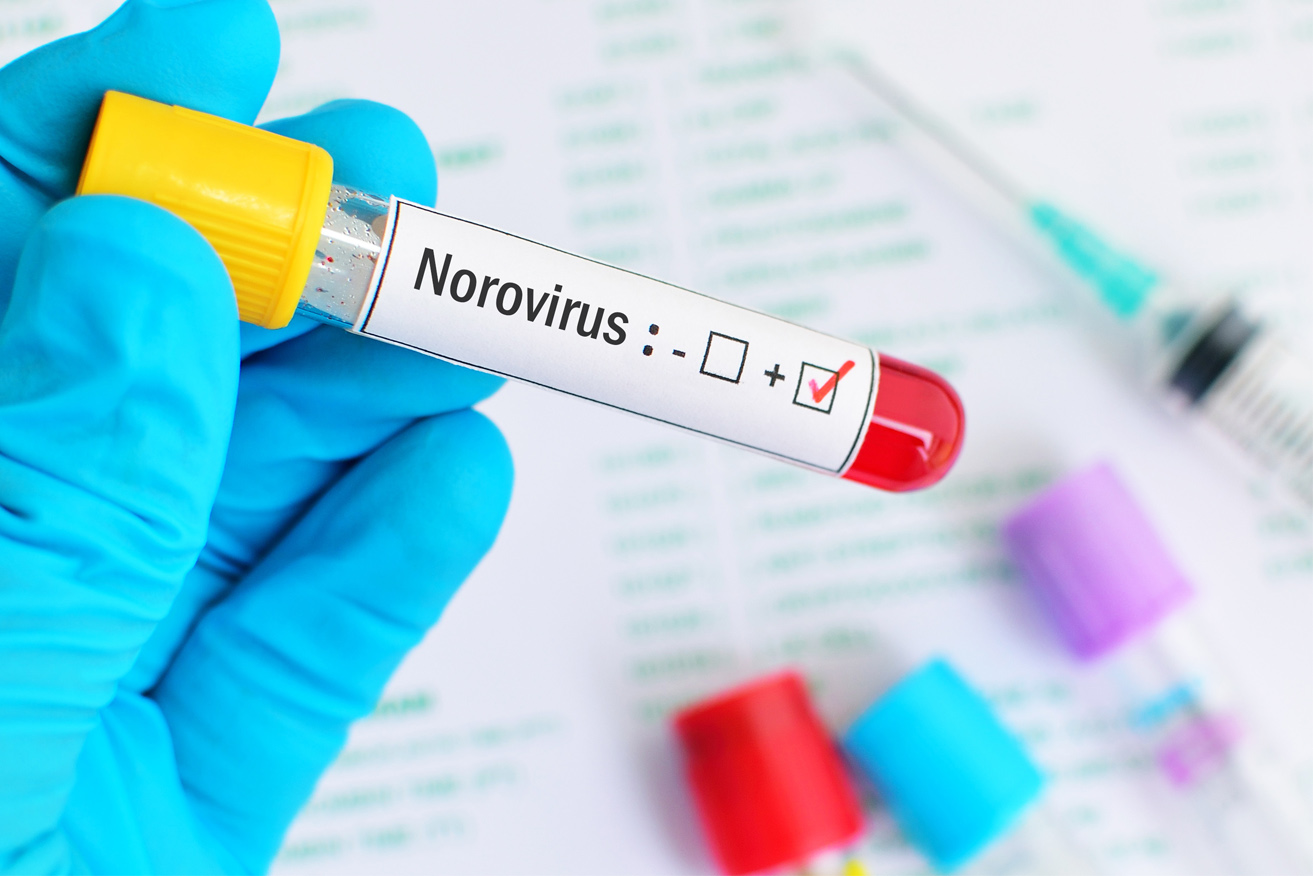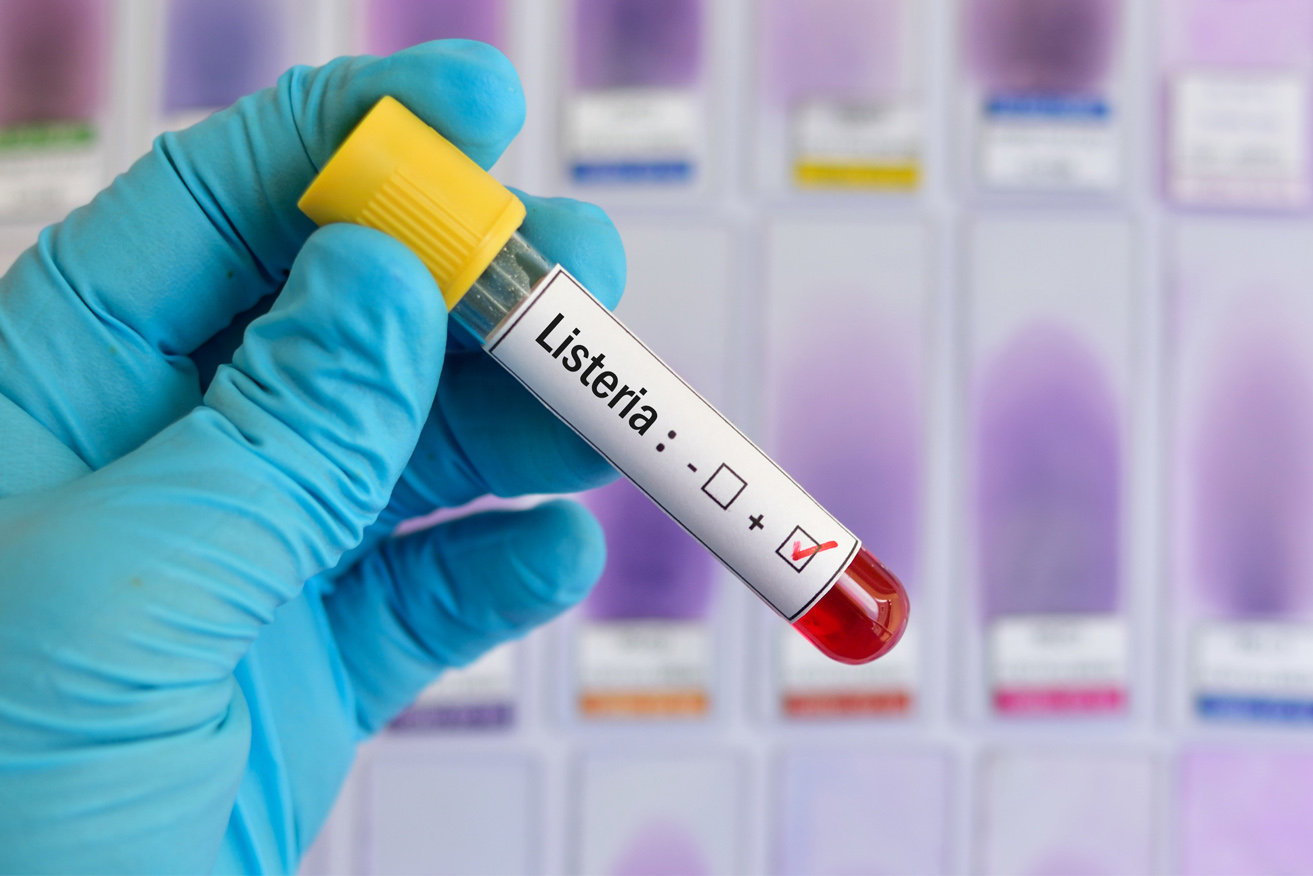Disclosure
Commercial support for this program has been provided by Michael Foods.
Looking to sign up for our newsletter? Click here
Sign up for NewsletterSauces & Dressings
Baked Goods
Pastas
Sports Nutrition
Pet Foods
Learn about our team’s extensive capabilities and resources.
Get to Know UsEggs
Potatoes
French Toast
See the Story From Our Farm To Your Table

Michael Foods Online CE Course (1 hour CE)
Michael Foods, Inc. will maintain verification of your attendance. Please fill out the following information. Upon completion of this course, a certificate of completion will be available for download.
Commercial support for this program has been provided by Michael Foods.

The concept of food safety encompasses chemical, physical, and biological attributes that allow food to be eaten “without incurring an excessive risk of injury, morbidity, or mortality,” as explained by Keener (Dec. 23, 2023). A primary focus is on foodborne pathogens causing foodborne illness.
Foodborne diseases are a major cause of illness in the United States. The CDC (2018) estimates that every year, foodborne illness causes:
Foodservice managers can play an important role in food protection, because 6 out of 10 foodborne illness outbreaks in the U.S. are associated with foodservice operations (Retail Food Safety Regulatory Association Collaborative, May 5, 2023).
Certain populations are at heightened risk related to foodborne illness, termed highly susceptible populations: the very young (age 5 or under), older adults (age 65 or older), pregnant women, and people with weakened immune systems. For example, the CDC (Jan. 26, 2024) says that children under age 5 who become ill from Salmonella are 3 times more likely to be hospitalized. One in 7 children under age 5 who contract an E. coli O157 infection will develop renal failure. In the older demographic, nearly half of people 65 or older who become ill from Salmonella, Campylobacter, Listeria, or E. coli are hospitalized, says the CDC. Women who are pregnant have a 10 times greater risk for Listeria infection.
Being immune-compromised can result from a variety of conditions, such as diabetes, liver disease, kidney disease, alcoholism, HIV, autoimmune disorders such as lupus, or receiving chemotherapy or radiation therapy, explains the CDC. As one example, “People on dialysis are 50 times more likely to get a Listeria infection,” they note.
A foodborne illness outbreak occurs when two or more people get the same illness from the same contaminated food or drink. Symptoms of foodborne illness can range “from relatively mild discomfort to very serious, life-threatening illness,” says the FDA (March 7, 2024). Symptoms can be upset stomach, nausea, abdominal cramps, vomiting, diarrhea, fever, and dehydration (CDC). In some cases, a foodborne illness can cause long-lasting effects, such as renal failure, arthritis, or brain or nerve damage, notes the CDC.
Depending on the cause, the symptoms of foodborne illness can begin within hours or days, and duration can be variable. For example, illness from Staphylococcus aureus has an onset of 1-6 hours and a typical duration of 1-2 days. Hepatitis A has an average onset of 28 days and a duration of up to 3 months (FDA, March 7, 2024).
A pathogenic foodborne illness can be an infection or an intoxication. For example, Shiga toxin-producing Escherichia coli (STEC), Yersinia, Vibrio, Cyclospora, Campylobacter, Salmonella, Shigella, and Listeria all cause foodborne infection. These pathogens, all monitored by the CDC FoodNet program, cause a disproportionate number of hospitalizations and deaths (June 28, 2023).
The CDC (Jan. 13, 2023) explains that we continually face new challenges in food safety because of changes in food production and supply models, including the globalization of the food supply; environmental changes that lead to food contamination; emerging toxins and pathogens, including antibiotic-resistant pathogens; changes in consumer habits; and changes in testing for diagnosis of foodborne illness.
To improve food safety efforts, there are several ways we can look at foodborne illness data. The CDC (Nov. 5, 2018) studies data from two perspectives: 1) what pathogens are involved, and 2) what foods are associated. “Having a better sense of the relationship between contaminated foods and illness supports food safety along the entire food production chain—from fields where food is grown to cutting boards in kitchens,” they explain.
In foodservice, the manager’s role is to reduce risk. Keener describes the risks as risk to public health, along with regulatory and reputational risks.
In this course, we will examine key trends related to foodborne illness pathogens, findings in foodservice, the FDA blueprint for food safety, what goes into a Food Safety Management System, the new traceability rule, and how to build a food safety culture. We will see that foods and pathogens exist in “pairings” that influence the level of risk for foodborne illness. Several pages throughout the course provide “A Closer Look” at pathogens and foods that have received special focus related to food safety.

Upon completion of this course, participants will:

A foodborne pathogen can be anything biological, including “viruses, fungi, algae, protozoa, and bacteria,” notes Keener (Dec. 23, 2023).
The CDC identifies the top five foodborne illness pathogens, ranked by number of cases, as:
Ranked by hospitalizations, the list changes:
Salmonella (non-typhoidal) is also the top cause of death from foodborne illness. There are more than 2,500 types of Salmonella, called “serotypes”. “Non-typhoidal” refers to the serotypes involved in foodborne illness.

Foodborne illness can be caused by two main methods, explains the USDA: infection or intoxication. Foodborne infection is caused by eating food that contains live bacteria or pathogens; these pathogens cause illness as they grow in the human gastrointestinal tract. Examples of this are E. coli, Campylobacter jejuni, Listeria monocytogenes, norovirus, Salmonella enteritidis, and Shigella foodborne illnesses.
Foodborne intoxication is caused by toxins that are released by pathogens. Examples include Bacillus cereus and Clostridium botulinum. A nonpathogenic form of foodborne intoxication is mushroom poisoning.
Of particular concern is the development of antibiotic resistance. This occurs when pathogens evolve and adapt to survive in the face of antibiotic treatments, says the CDC (Nov. 23, 2021). Thus, antibiotics that used to work against certain infections no longer do their job. Resistant infections can be difficult, and sometimes impossible, to treat, says the CDC.
The CDC describes antibiotic resistance as an “urgent global public health threat”. In the U.S., we see more than 2.8 million antimicrobial-resistant infections each year, with some of these cases uncurable. The CDC, as well as health agencies across the globe, are actively working to address this problem.
Not all antibiotic-resistant infections are foodborne illnesses. However, foodborne pathogens are among them. Overuse of antibiotics for both people and farm animals on a global scale is one of the contributing causes. “Animals, like people, carry germs in their gut, including antibiotic-resistant germs,” explains the CDC. “These germs can get into the food supply and spread globally through food, farms, and animals.”
The CDC categorizes antibiotic-resistant pathogens by level of threat. Their “serious threat” list includes drug-resistant Campylobacter, non-typhoidal Salmonella, and Shigella species.

A group of known 31 pathogens cause about 9.4 million foodborne illnesses annually, according to the CDC (Nov. 5, 2018, Burden of Foodborne Illness). For all the information we have about foodborne pathogens, it’s important to realize that for many foodborne illness cases, we do not know the cause.
“Unspecified agents” are responsible for 38.4 million gastroenteritis illnesses, 71,878 hospitalizations, and 1,686 deaths each year, says the CDC. These agents could be:
Keener (Dec. 20, 2023) points to dynamic trends related to some of the less commonly recognized “suspects” in foodborne illness. For example, cases of cyclosporiasis (caused by the protozoa, cyclospora) have been increasing rapidly. This is challenging to address because identifying the food source is nearly impossible. The protozoa is associated with human waste, and past infections have been linked to fresh salad greens and herbs. Handwashing is one of the critical preventive steps, he says.
Illness from the often-deadly Vibrio vulnificus bacteria has also been on the rise, says Keener. Most infections relate to eating raw or undercooked shellfish, and undercooked fish may also be a vehicle, he adds. Vibrio foodborne illness increased eight-fold from 1988 to 2018, notes Keener. It has always been most common in the warmer months, and Keener notes a rise in cases during Summer 2023, at the same time that coastal water temperatures in parts of the U.S. also rose.
“Climate change may be changing the geographic distribution of certain pathogenic microorganisms,” suggests Keener. This is one reason he says that “food safety is dynamic”.
The concept of emerging pathogens is closely watched by infectious disease experts. An emerging foodborne pathogen is usually defined as a pathogen that had not previously known that is linked to food and is now recognized as a source of human illness. One example of this is the bacteria, Aliarcobacter, which is widely present in the environment and can contaminate a variety of foods, such as poultry, pork, beef and lamb meat, milk and dairy products, fish and shellfish, and ready-to-eat vegetables (Grudlewska-Buda, K. et al., May 2023). Already, antibiotic-resistant strains are common, they add.

Norovirus is the top known cause of foodborne illness, causing 58% of cases, or 19-21 million cases annually (CDC, May 8, 2023). It also triggers 2.27 million outpatient clinic visits, 465,000 emergency department visits, and 109,000 hospitalizations, they add. It is “the leading cause of vomiting and diarrhea from acute gastroenteritis (inflammation of the stomach and intestines) among people of all ages in the United States,” says the CDC. Caseloads can jump 50% in years when there is a new strain.
This is why the FDA has chosen to zero in on norovirus illness prevention. Most norovirus illnesses “can be traced back to food contaminated from feces or vomit from soiled hands of infected food employees” in foodservice, they note (FDA, Mar. 6, 2023). Norovirus is spread by people.
The research by Duret et al. (2017) set out to quantify the spread of norovirus in foodservice, zeroing in on specific practices. Among their conclusions was, “The contamination of hands in the restrooms, directly from the source or from objects, is the major route of norovirus transmission to the retail environment.” They recommended the use of touchless faucets and doors.
They also recommended exclusion of employees with vomiting and/or diarrhea when symptoms first appear. This, they found, would have a major impact on norovirus transmission. They recommended increasing the exclusion period to 48 hours after symptom resolution. They found employee restriction ineffective.
Other practices they found critical were handwashing, cleaning and sanitizing of food-contact surfaces, and avoiding bare-hand contact with ready-to-eat food, e.g., when assembling sandwiches or other cold foods.
Underscoring the importance of these measures are previous research findings cited by the authors:
The FDA explains, “There is currently no single effective strategy for preventing foodborne norovirus in food establishments. This is why the FDA Food Code recommends the use of a combination of prevention strategies” (FDA, June 20, 2023). These include personal hygiene, protection from contamination, and employee health policies. Another key component of the FDA-recommended strategies is having Food Safety Management Systems in place.

The term, Food Safety Management Systems (FSMS), used by the FDA, describes specific actions and procedures that help to achieve Active Managerial Control. This term, explained in the FDA 2022 Food Code Annex, means “developing and implementing food safety management systems to prevent, eliminate, or reduce the occurrence of foodborne illness risk factors”.
When a foodservice operation undergoes a health inspection, there may be violations and then corrections. That is a reactive process. Active managerial control is proactive in ensuring that risk factors are managed up-front and monitored, explains the FDA. The actions taken work together to manage risks and safeguard guests.
Elements of Active Managerial Control defined by the FDA are:
This strategy for control may be based on Hazard Analysis and Critical Control Point (HACCP) principles. “FDA recognizes that there are many management systems that you can voluntarily implement to achieve active managerial control of risk factors,” comments the FDA (April 2006). A HACCP plan identifies hazards in the flow of food and develops controls for those hazards and ways to measure them. It creates monitoring procedures and corrective actions, as well as verification and record-keeping procedures. Anyone interested in learning more about how to implement a HACCP system may wish to consult the FDA guide, Managing Food Safety: A Manual for the Voluntary Use of HACCP Principles for Operators of Food Service and Retail Establishments (April 2006).
SOPs and systems established should align with all applicable health department regulations. The FDA Food Code (FDA, 2022) provides model food safety guidance that can be adopted and/or adapted by local health jurisdictions. It is updated every four years. Adoption of various versions is not uniform, and the FDA maintains state-by-state adoption details on its website at fda.gov.
Some changes in the 2022 edition of the Food Code were: a provision that food managed according to Food Code safety provisions can be donated; the addition of sesame as a major food allergen; the guidance to inform consumers in writing of major food allergens in unpackaged food; new requirements for allowing pet dogs in outdoor dining spaces; and others.

Since 1998, the FDA (June 20, 2023) has been conducting on-site research in a variety of foodservice settings to identify actual behaviors and practices, as related to the top five risk factors that contribute to foodborne illness outbreaks:
The list was broken down into specific practices, such as handwashing, avoiding bare-hand contact with food, ensuring proper holding temperatures, cooling to manage time and temperature control, and others. The research is intended to highlight opportunities to implement “risk-based interventions” that could “have the greatest impact on enhancing public health protection,” explains the FDA.
In their most recent study, which covered restaurants, 2017-2018, the FDA found several practices in poor compliance, such as poor personal hygiene and improper holding time/temperature.
They also found that restaurants had the best control over preventing bare-hand contact with food and cooking hazardous foods to required temperatures, as compared with other critical practices. Three areas that needed improvement were: cold holding time and temperature control, employee handwashing, and proper time and temperature control for cooling foods. The FDA also found that rates of compliance with defined food safety practices were much higher when there was a well-developed Food Safety Management System; these restaurants had “less than half as many risk factors”.
A previous FDA study (2010) included on-site or institutional foodservice settings. It found that hospitals, nursing homes, and elementary schools had higher overall compliance rates than restaurants; 81-84% demonstrated compliance with all data items. They identified improvements since the research project began in 1998. However, they noted, “Many segments of the food industry continue to show a high percentage of Out of Compliance observations in critical areas.”
Employee health is a critical area to manage in foodservice. A report by the CDC (June 2, 2023) examining outbreaks related to foodservice found that an ill or infectious food worker was a contributing factor to about 40% of outbreaks. Their findings related to norovirus and also to Salmonella.
FDA Food Code guidance specifies that an operation should have a policy requiring workers to tell a manager when they are ill; a policy that specifies all five symptoms workers need to report to a manager (vomiting, diarrhea, jaundice, sore throat with fever, and lesion with pus); a policy that restricts or excludes ill or infectious workers from working; and a policy that specifies all five symptoms requiring restriction or exclusion, notes the CDC. They also suggest offering paid sick leave to better incentivize ill employees to stay home.

Foodborne illness from Listeria is another focal point for the FDA (May 2021), especially in delis. Listeria is the “third leading cause of death from foodborne illness,” and is “persistent in retail environments,” they note. A major challenge with this pathogen is that it can grow under refrigeration, which means that managing time controls is a critical part of managing the risk. They particularly call out date-marking guidance contained in the FDA Food Code (2022):
“Section 3-501.17 specifies ready-to-eat, time/temperature control for safety (TCS) food prepared in a food establishment and held longer than a 24 hour period shall be marked to indicate the date or day by which the food is to be consumed on the premises, sold, or discarded when held at a temperature of 5°C (41°F) or less for a maximum of 7 days.”
As with restaurants, the FDA found that operations with a well-developed and documented FSMS had high compliance rates with date-marking (83%). Those with “under-developed” FSMS had only a 44% rate, and those without a FSMS had an 11% rate.
While these data relate to deli operations, the same guidance applies to deli products handled in any foodservice operation. The Listeria hazard can be present in smoked seafood, deli meats, and deli salads prepared in a food establishment, notes the Food Code.
Also related to deli operations, the FDA calls out the dangers of contamination of deli slicers, where food soils and pathogens can build up. In practice, deli slicer contamination has been linked to numerous foodborne illness outbreaks, they point out (Mar. 7, 2022). “Simply wiping down a slicer to remove visible debris” is not enough, they explain. They recommend cleaning and sanitizing a slicer every four hours, and they specify detailed inspection and maintenance practices to manage this risk.

In July 2020, the FDA released its New Era of Smarter Food Safety blueprint. The blueprint “outlines achievable goals to enhance traceability, improve predictive analytics, respond more rapidly to outbreaks, address new business models, reduce contamination of food, and foster the development of stronger food safety cultures,” says the FDA (Aug. 16, 2023). The four components are:

For traceability, the FDA’s goal is to achieve end-to-end traceability throughout the food system. Section 204 of the FDA Food Safety Modernization Act (FSMA) designates high-risk foods for which “additional recordkeeping requirements are appropriate and necessary to protect public health”, says the FDA (Aug. 18, 2023).
The Food Traceability Rule went into effect on Jan. 20, 2023 and has a three-year implementation period. Full compliance is required on Jan. 20, 2026. The rule requires tracking, tracing, and record-keeping. This can allow for faster response and enhanced consumer protection in the event of an outbreak or a recall, explains the National Restaurant Association (Jan. 26, 2023). It applies to entities all along the food supply chain.
The FDA (Aug. 18, 2023) explains that its Food Traceability List (FTL) was developed using pairings of “commodity-hazard pairs”—combinations of foods and pathogens that have demonstrated a high frequency of outbreaks, severity of illness, likelihood of contamination, potential for pathogen growth, and other factors. An example is STEC in leafy greens.
The list includes soft cheeses; cheese made from unpasteurized milk (other than hard cheeses); shell eggs; nut butters; fresh cucumbers, herbs, leafy greens, melons, peppers, sprouts, tomatoes, tropical tree fruits; many fresh-cut fruits and vegetables; fresh or frozen finfish and shellfish; and refrigerated ready-to-eat deli salads.
Critical Tracking Events are defined by the FDA as steps in the flow of food through the supply chain at which traceability data must be collected. For foodservice operations, the Critical Tracking Event generally applies to receiving food (National Restaurant Association). At this point, the establishment must collect Key Data Elements defined by the FDA: the traceability lot code, quantity and unit measure of the food, food description, previous food suppliers’ location, restaurant receiving location, date received, and reference documents with identification numbers (National Restaurant Association, Dec. 2023). An example of a reference document number could be a purchase order number, says the Association.
Only defined entities can generate a traceability lot code, such as a food packager or a first-receiver from a fishing vessel. The lot code is “an alphanumeric code/barcode used to uniquely identify a specific batch (lot) of food”. Generally, food suppliers can be a major resource for operators; they may be supplying food shipments with traceable bar codes, for example, says the Association.
Data must be maintained in a sortable, electronic spreadsheet. Upon FDA request (e.g., in the event of a foodborne illness outbreak), the spreadsheet must be provided to FDA within 24 hours. This documentation must be maintained for two years.
There are some exemptions outlined in the rule. For example, a restaurant with less than $250,000 in average annual sales over the past three years does not need to comply. Restaurants with $250,000 to $1 million in annual food sales are required to follow the rule but are exempt from maintaining the spreadsheet.
Foodservice operations will also be required to have a Food Traceability Plan if their menu includes any foods on the FDA’s Food Traceability List. “A food traceability plan explains how your restaurant creates and maintains FTL food required information. It is intended to help the FDA quickly review and understand the information you provide during a foodborne illness outbreak investigation related to food(s) on the Food Traceability List,” explains the Association (Dec. 2023). The plan must address lot codes and record-keeping, how you will identify foods on your menu that are on the Food Traceability List, and the name of a designated contact person.
“It’s important for a restaurant to know how the rule may impact current business practices long before the January 2026 deadline,” advises the Association (Dec. 2023). The National Restaurant Association (Dec. 2023) provides a guide with record-keeping examples, and the FDA provides detailed guidance on its website.

Food Safety Culture is one of the pillars of the FDA New Era of Smarter Food Safety blueprint. What does it mean? The term goes beyond knowledge, processes, and systems—looking at what influences foodservice employees’ behavior on-the-job. Culture encompasses “shared attitudes, values, and beliefs about food safety held by both employees and leadership in an organization,” says the FDA (Feb. 29, 2022). The bottom line is that shared and deep-rooted beliefs can affect the food safety performance of the organization.
Factors that contribute to food safety culture, according to the FDA, are:
The FDA explains that having a FSMS alone does not assure food safety performance. Systems work hand-in-hand with culture. The FDA recommends liberally promoting food safety messages. They also advise, “An organization’s food safety messages should be built on the concept of ‘we.’ This collective consciousness can inspire employees to do the right thing, solve problems themselves, and help them assume ownership of their role in ensuring consumer safety and brand protection.”
The Retail Food Safety Regulatory Association Collaborative (May 5, 2023) provides an infographic on this topic, synthesizing key ideas. It also provides a variety of training materials and food safety resources.

The CDC has highlighted several food safety issues related to poultry, as well as ground beef.
Poultry: In a study of foods associated with outbreaks, the CDC concluded that “poultry accounted for the most deaths (19%); many of those were caused by Listeria and Salmonella infections” (Nov. 5, 2018, Attribution). Furthermore, Salmonella is the top bacterial cause of foodborne illness, and chicken is a major source, explains the CDC (Jan. 12, 2023). Vaccination of poultry has likely helped reduce the Typhimurium strain, but non-typhoidal Salmonella still prevails.
In grocery stores, about 1 in 25 packages of chicken is contaminated with Salmonella, according to CDC estimates. The essential control is cooking to Food Code time and temperature standards.
Ground beef: E. coli in ground beef is a major contributor to foodborne illness outbreaks, says the CDC (July 12, 2022). Based on research, they note two common problems in foodservice: undercooking ground beef and cross-contamination from ground beef. Per the Food Code, ground beef should be cooked 155°F held for 15 seconds, but about 4 out of 5 foodservice managers don’t check that with a thermometer, the FDA reports. Verifying temperature is important because it is not possible to visually judge safety with ground beef products.
Cross-contamination, the transfer of pathogens from one food to another, “happens when hands or equipment touch raw ground beef and then touch other food or kitchen equipment,” they explain. Some commonly cited practices in their research were skipping handwashing after handling raw ground beef, using the same utensil for raw and cooked beef, and touching hands on cloths or aprons after touching raw ground beef.
Overall, CDC encourages foodservice operators to “reduce practices that could lead to undercooking and cross contamination of raw ground beef” (CDC, July 12, 2022).

The Salmonella present in chickens can transfer to eggs. Eggs have frequently been associated with foodborne illness outbreaks. “Inadequate cooking, such as undercooking raw shell eggs” is cited in the FDA Food Code as one of the top five foodborne illness risk factors (FDA, 2022).
Salmonella can be on the shell, but importantly, it can also be present inside the egg (USDA, 2019). In 2010, the FDA implemented an Egg Safety Rule for large producers of eggs. The rule includes steps for controlling Salmonella. Eggs are classified as a time/temperature control for safety (TCS) food, meaning that ensuring endpoint cooking temperatures held for specified times is critical to eliminate pathogens in foodservice products (FDA, 2022). These standards include:
The FDA provides a graphical reference chart on egg safety for foodservice (FDA, Sept. 9, 2020). Shell eggs must also be transported and distributed under refrigeration at an ambient temperature not to exceed 45°F, per federal regulations.
“Raw or undercooked eggs that are used in certain dressings or sauces are particularly hazardous because the virulent organism Salmonella Enteritidis may be present in raw shell eggs,” notes the FDA. Pasteurized shell eggs and pasteurized egg products are two options presented by the Food Code to manage the Salmonella risk. Eggs pasteurized in the shell have been treated by an FDA-approved method to eliminate pathogens. Thus, they are exempt from the TCS food classification. Instead, the FDA defines them as a ready-to-eat food and an appropriate substitute in a recipe that requires raw or undercooked eggs.
Pasteurized egg products have been separated from the shell and pasteurized in a food processing plant, by the FDA definition.
Serving highly susceptible populations: For highly susceptible populations, such as those served in a hospital, nursing home, or day care center, eggs cooked to order (145°F) cannot be served, according to FDA guidance. Furthermore, the Food Code specifies that pasteurized eggs or egg products must be substituted for raw eggs when preparing foods such as Caesar salad, hollandaise sauce, mayonnaise, meringue, ice cream, and egg-fortified beverages, as well as in recipes in which more than one egg is broken and eggs are combined.

Leafy greens such as Romaine lettuce and spinach have been associated with numerous foodborne outbreaks from the pathogens STEC and others, says the CDC (Jan. 13, 2023). In fact, 40 STEC outbreaks in North America from 2009 through 2018 were linked to leafy greens.
This ongoing challenge led the FDA to release a Leafy Greens Action Plan in 2020. The plan addresses controlling contamination throughout the flow of food, with extensive guidance for growers on management of agricultural water and environmental conditions (FDA, Nov. 17, 2023).
For foodservice operators, the FDA encourages a focus on purchasing specifications—such as enhanced third party-audits—and has included leafy greens in its traceability rule. In the FDA Food Code, cut leafy greens have been classified as a time/temperature for safety food requiring time-temperature control for safety (TCS). This means they must be held at 41°F or below.

Foodborne illness is a major public health problem, and foodservice managers can play a key role in managing risk to protect guests. Emerging pathogens, antibiotic resistance, and other factors make food safety a moving target. Continuing public health research from the CDC and FDA helps to inform priorities for controls, such as the importance of employee hygiene and health policies in controlling the spread of Norovirus.
A foodservice manager can implement Food Safety Management Systems and build a Food Safety Culture to improve food safety performance.
Regulatory efforts to manage food safety ripple through the food chain. As part of its New Era of Smarter Food Safety, the FDA is working to strengthen traceability for faster response. Most foodservice operations will need to comply with the Food Traceability Rule starting Jan. 20, 2026.
Poultry, ground beef, eggs, and leafy greens are examples of foods that have commonly been associated with foodborne illness outbreaks. Control steps outlined in the FDA Food Code are essential to managing the risks of these and other foods.
CDC. (Nov. 23, 2021). 2019 AR Threats Report. https://www.cdc.gov/
CDC. (Nov. 5, 2018). Attribution of Foodborne Illness: Findings. https://www.cdc.gov/
CDC. (Nov. 5, 2018). Burden of Foodborne Illness: Questions and Answers. https://www.cdc.gov/
CDC. (Jan. 13, 2023). Challenges in Food Safety. https://www.cdc.gov/
CDC. (Nov. 5, 2018). Estimates of Foodborne Illness in the United States. https://www.cdc.gov/
CDC. (Jan. 26, 2024). Factors That Increase Your Risk for Food Poisoning. https://www.cdc.gov/
CDC. (Aug. 9, 2023). Foodborne Germs and Illnesses. https://www.cdc.gov/
CDC. (June 2, 2023). Foodborne Illness Outbreaks at Retail Food Establishments - National Environmental Assessment Reporting System, 25 State and Local Health Departments, 2017–2019. https://www.cdc.gov/
CDC. (June 28, 2023). FoodNet 2022 Preliminary Data. https://www.cdc.gov/
CDC. (May 8, 2023). Norovirus Burden and Trends. https://www.cdc.gov/
CDC. (July 12, 2022). Restaurant Ground Beef Handling and Cooking. https://www.cdc.gov/
CDC. (Jan. 12, 2023). Salmonella and Chicken. https://www.cdc.gov/
CDC. (Jan. 13, 2023). Shiga Toxin-producing E. coil and Leafy Greens. https://www.cdc.gov/
Duret, S. et al. (2017). Quantitative Risk Assessment of Norovirus Transmission in Food Establishments: Evaluating the Impact of Intervention Strategies and Food Employee Behavior on the Risk Associated with Norovirus in Foods. Risk Analysis.
FDA. (2022). 2022 Food Code. https://www.fda.gov/
FDA. (May 2021). Call to Action for Regulators: Assisting Industry with Food Safety Management Systems in Delis to Reduce Listeria Monocytogenes. https://www.fda.gov/
FDA. (Aug. 18, 2023). Food Traceability List. https://www.fda.gov/
FDA. (Feb. 29, 2022). Food Safety Culture Systematic Literature Review. https://www.fda.gov/
FDA. (accessed March 7, 2024). Foodborne Illness-Causing Organisms in the U.S. https://www.fda.gov/
FDA. (Mar. 7, 2022). Keep Commercial Deli Slicers Safe. https://www.fda.gov/
FDA. (Sept. 9, 2020). Key Temperatures for Egg Safety in Food Service Operations and Retail Food Stores. https://www.fda.gov/
FDA. (Nov. 17, 2023). Leafy Greens STEC Action Plan. https://www.fda.gov/
FDA. (April 2006). Managing Food Safety: A Manual for the Voluntary Use of HACCP Principles for Operators of Food Service and Retail Establishments. https://www.fda.gov/
FDA. (Aug. 16, 2023). New Era for Smarter Food Safety. https://www.fda.gov/
FDA. (June 20, 2023). Retail Food Risk Factor Study. https://www.fda.gov/
FDA. (Mar. 6, 2023). Risk Assessment of Norovirus Transmission in Food Establishments. https://www.fda.gov
Grudlewska-Buda, K. et al. (May 2023). Antibiotic Resistance in Selected Emerging Bacterial Foodborne Pathogens—An Issue of Concern? Antibiotics.
Keener, L. (Dec. 23, 2023). Foodborne Pathogens: The Unusual Suspects. Food Technology.
National Restaurant Association. (Dec. 2023). Restaurant Food Traceability Rule Guidance.
National Restaurant Association. (Jan. 26, 2023). Understanding the New FDA Traceability Rule: What is it and How Should You Prepare? Webinar.
Retail Food Safety Regulatory Association Collaborative. (May 5, 2023). Creating a Retail Food Safety Culture Through the use of Active Managerial Control Infographic. https://www.retailfoodsafetycollaborative.org/
USDA. (accessed Mar. 5, 2024). Ask USDA. https://ask.usda.gov/
USDA. (Nov. 4, 2019). Shell Eggs from Farm to Table. https://www.fsis.usda.gov/
Select the correct answer for each question.
1. Norovirus is spread by
Select the correct answer for each question.
2. According to the FDA, “Developing and implementing food safety management systems to prevent, eliminate, or reduce the occurrence of foodborne illness risk factors” is the definition of
Select the correct answer for each question.
3. According to the National Restaurant Association, Critical Tracking Events generally applies to which step in foodservice?
Select the correct answer for each question.
4. According to this program, which group of foods are examples of foods that have commonly been associated with foodborne illness outbreaks?
Course complete!
Your Score: out of 4 correct.
You did it! Click the button below to download your certificate of completion for this course. Keep it for your records. To make it easy on you, we have made the certificate fillable.
Download CertificateDid you like the course you completed? Do you have any feedback or suggestions for future courses? We can’t wait to review your feedback!
Complete Course EvaluationIf you would like to submit your evaluation and comments to the Commission on Dietetic Registration, you may do so at QualityCPE@eatright.org.